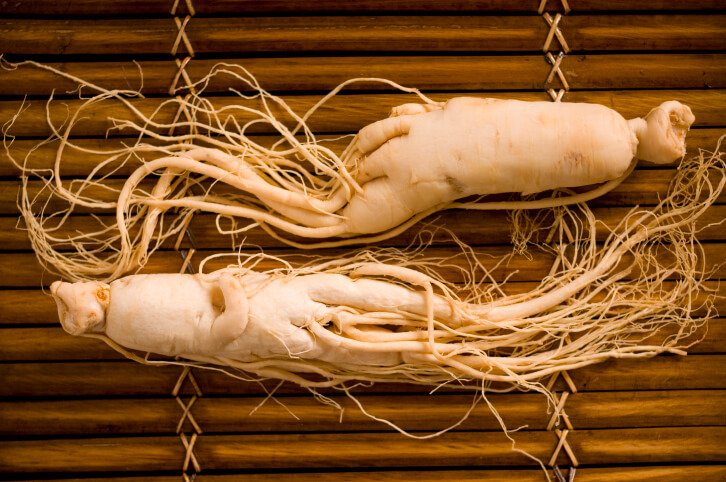
Korean Red Ginseng: King of Adaptogens
A potent preventative treatment from the Korean Peninsula
By Conan Milner | The Epoch Times
Since ancient times, ginseng root has been considered one of the world’s most valuable medicinal herbs.
Ginseng is a perennial plant native to the mountainous regions of the Orient. You can spot one at a distance by its cluster of red berries, but it’s what underground that counts is.
Unfortunately, there is also a lot of confusion that accompanies this plant. Due to the strong reputation associated with the ginseng name, several plants wear the moniker. Siberian ginseng, pseudoginseng, American ginseng, Indian ginseng, and so on all have similar properties. These herbs are classified as adaptogens because they help the body better adapt to the onslaught of stress and the aging process.
However, the most powerful and highly regarded herb from this family is known as Panax ginseng. “Panax” means “all-healing” in Greek. Other names for this herb include “long-life root,” “the promise of immortality,” and “king of all herbs.”
Korean Red
Think of Korean red ginseng as Panax with extra muscle. Part of what makes this variety special is where it’s grown. The Korean soil and climate are ideal for raising Panax ginseng, and the farmers there borrow from a long tradition of ginseng cultivation. The Korean government also imposes strict quality controls over this crop, ensuring a higher quality product.
Another factor exclusive to Korean red ginseng is how it is processed. Most of the Panax ginseng on the market is simply dried after it’s harvested, resulting in what is known as white ginseng. To make Korean red, the fresh ginseng roots get a long, hot steam bath before drying. Evidence for the practice goes back nearly a thousand years.
The heat of the steam gelatinizes the starch of the roots, giving them a reddish-brown colour and a warm, sweet taste. This process was originally developed to grant the herb a longer shelf life. But researchers have found that steaming actually concentrates key chemical constituents in Panax ginseng (known as ginsenosides), which makes for a more powerful medicine. According to the book “Chinese Herbal Medicine: Materia Medica,” by Ted Kaptchuk et al., compiled from Chinese textbooks, Korean red ginseng is stronger than what comes from China.
Warmth and Energy
In general, what makes ginseng so sought-after are its rejuvenative powers. In China, Panax ginseng is known as “ren shen” or “man root.” Some see the shape of a human figure in the tendrils of a mature root, but the symbolism goes deeper. Ginseng has been used for centuries to give strength and stamina to weak and tired bodies.
In traditional Chinese medicine, Panax ginseng is considered the ultimate yang and qi tonic due to the warmth and energy that it provides. The main symptoms that call for ginseng are weaknesses such as shortness of breath, lethargy, impotence, cold limbs, weak pulse, lack of appetite, and chronic diarrhoea.
Unlike a lot of so-called “ancient cures,” there are hundreds of studies on Panax ginseng to back up the hype. Clinical trials have shown that ginseng can improve general well-being, reduce stress, give strength to the elderly, improve brain function, and more.
Other conditions that Panax ginseng has been shown to treat include diabetes, anxiety, and insomnia.
The effect is most pronounced with Korean red ginseng. Because of its particularly warming nature, Korean red is the ginseng of choice when addressing conditions characterized by cold and weakness. It also has ginsenosides not found in other ginsengs, so Korean red is ideally suited toward supporting immunity, memory, and liver function.
Because of its reputation for helping regenerate our vital energy, Korean red ginseng is perhaps best known for treating impotence. Studies have shown good results with this ginseng’s ability to treat erectile dysfunction and other issues related to infertility.
But you don’t need a disease to benefit Korean red ginseng. Like other adaptogens, ginseng works best when taken as a preventive treatment. Regular consumption has been shown to boost immunity, improve our response to stress, and reduce the risk of cancer.
Although Korean red ginseng is generally a very safe herb, keep in mind that there are times to avoid it. For those who run hot (or who tend to be too revved up), Korean red may be too strong. Side effects include headaches and constipation. Such individuals could be better served by the gentler, cooler nature of white ginseng.
Adaptogens typically work best when we take them on a daily basis. But it’s best to stop when your body is fighting an infection. A Chinese herbalist is not likely to prescribe ginseng during an active infection because the tonic nature of the herb could potentially increase the energy available to the virus. So when it comes to virus protection, consider ginseng as a preventive measure rather than as a treatment for flu symptoms.
If you want to buy Korean Red Ginseng, it’s widely available here.
About the Author
Conan Milner is a health reporter for the Epoch Times. He graduated from Wayne State University with a Bachelor of Fine Arts and is a member of the American Herbalist Guild.
